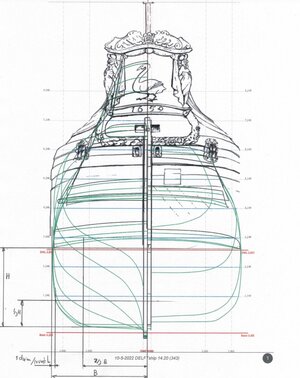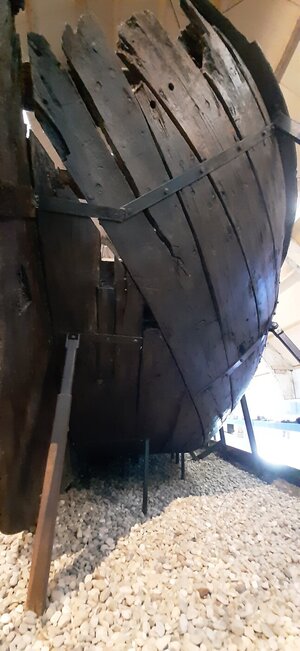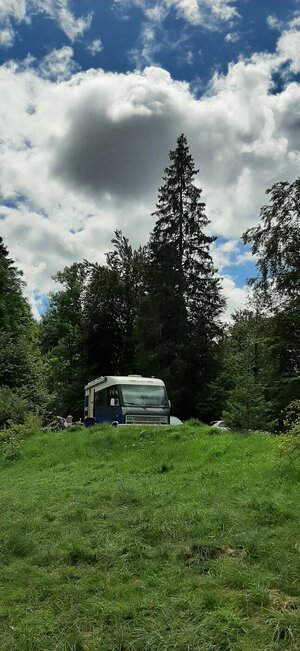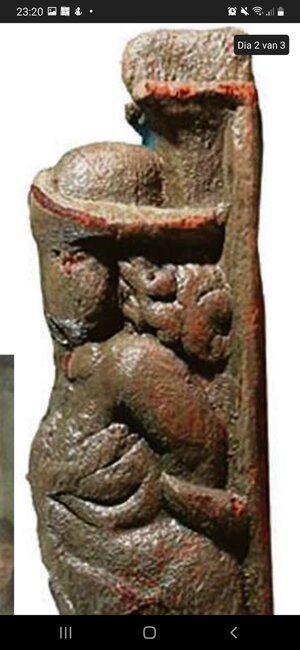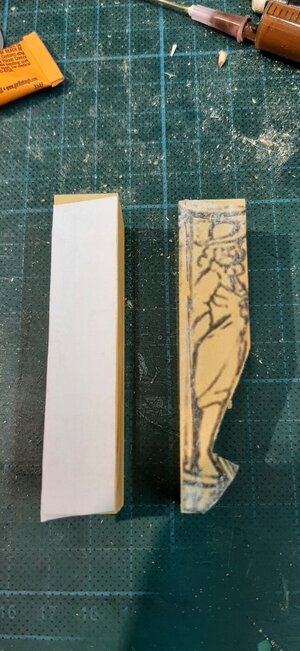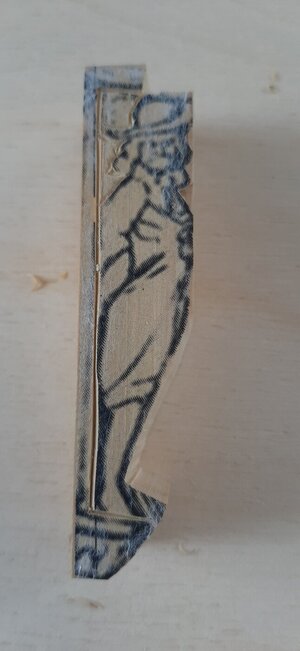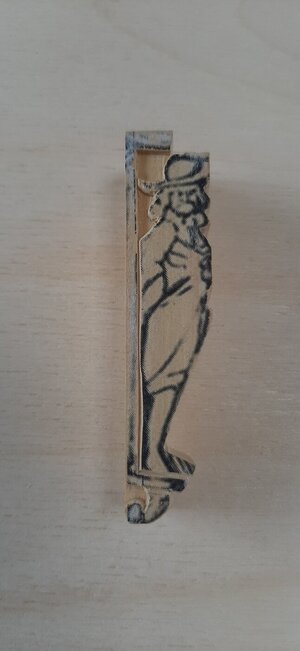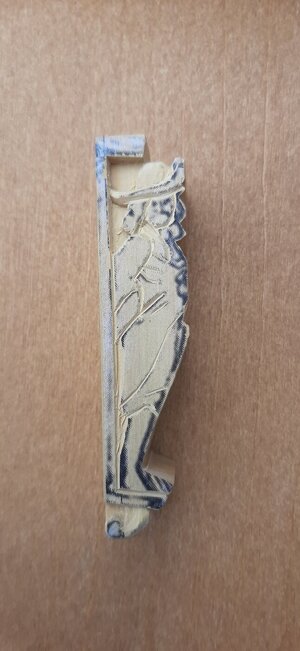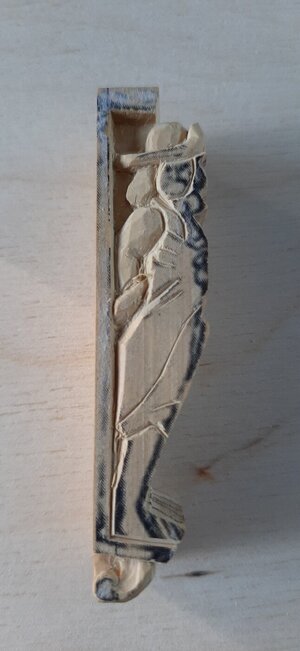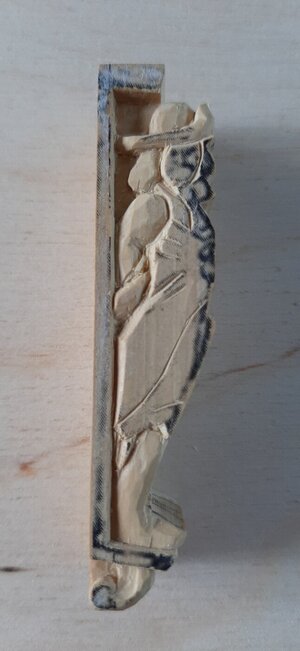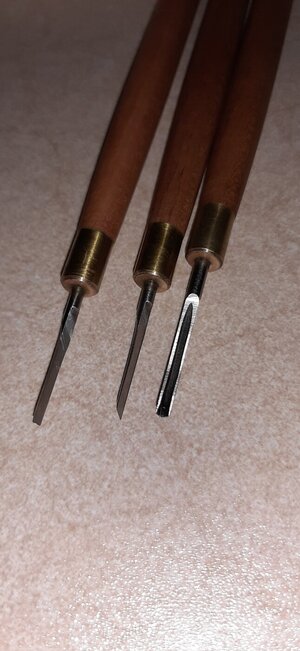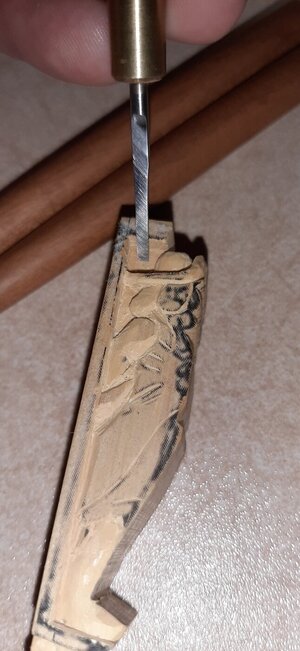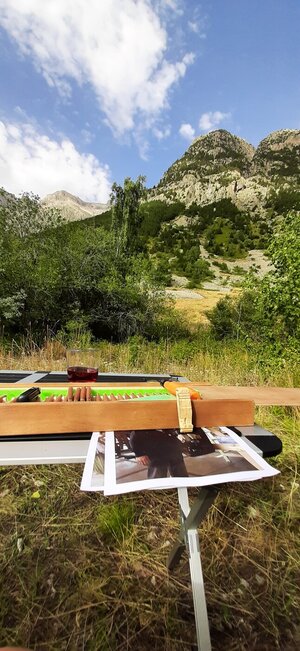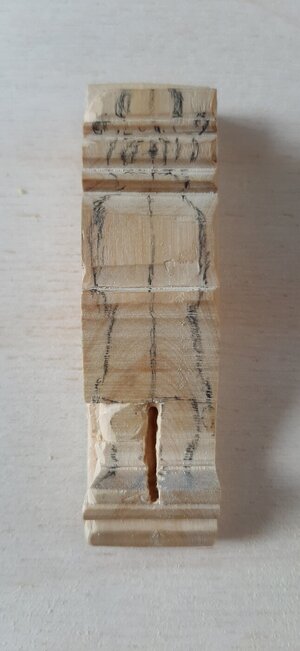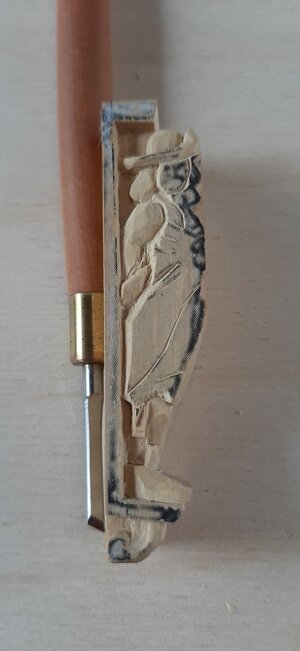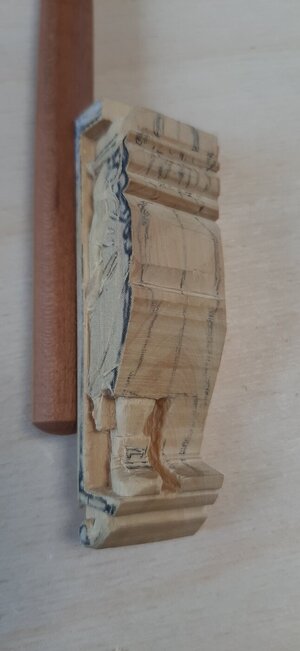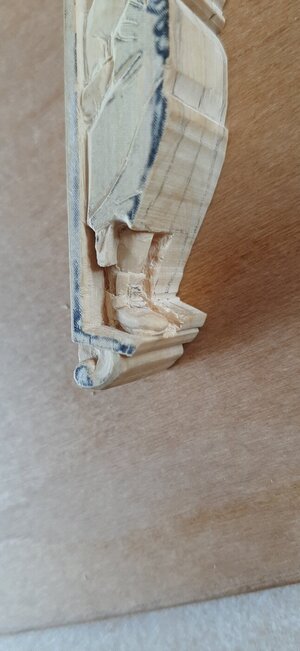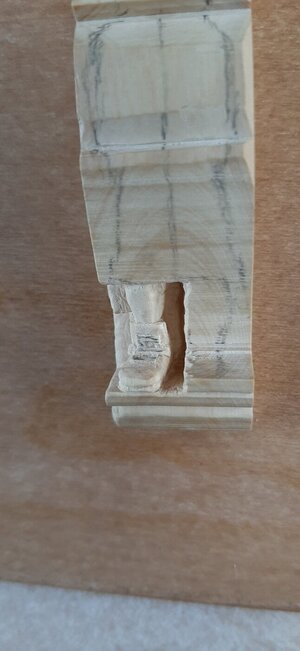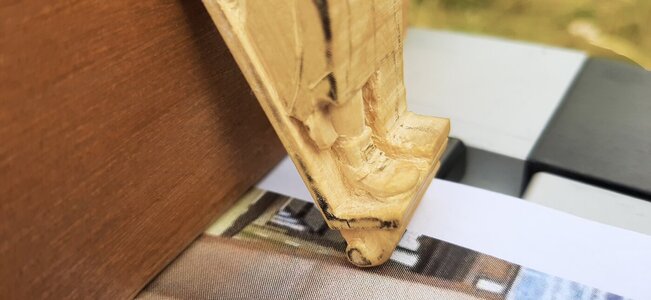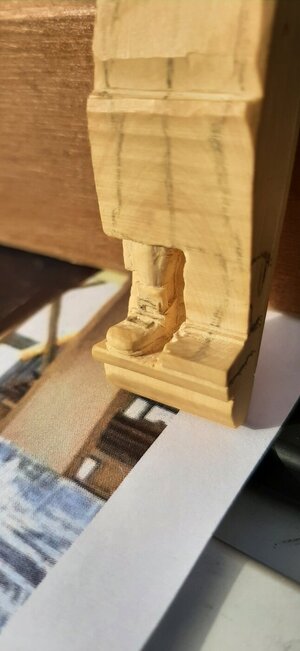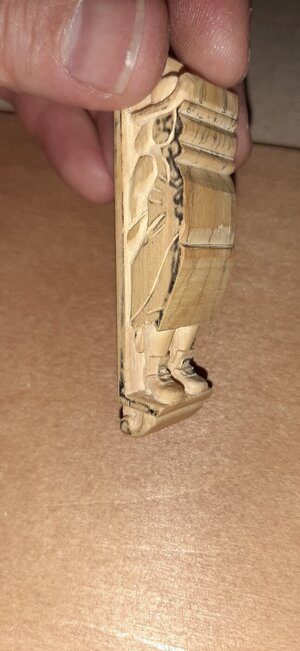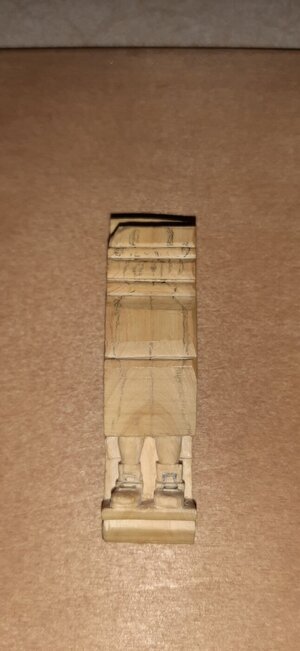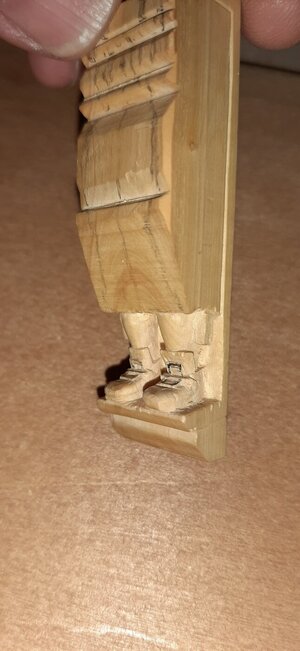Being on holidays at the moment I started working in my mobile workshop on some carvings. Lets call it carving across Europe currently in the Jura in France.
View attachment 388580
The carvings are the two hoekmannen which I already prepared before our road trip.
View attachment 388586View attachment 388585
View attachment 388577
The basis is one of the hoekmannen found at the wreck site. And it is facinating to see that this is not only a statue but also the freeze on the side of the upper transome and the upper and lower console, all in one carving which is a part of the construction.
I will take you step by step through the carving progress during the coming three weeks, a decent European holiday.
First I carve the outlines to free the statue from the freeze.
View attachment 388578
The deeper parts are removed.
View attachment 388579
All lines from the print carved into the wood as the print disappears during the process.
View attachment 388581
I start carving on the individual parts, layer by layer on the hat, hair and arm.
View attachment 388582
On the forward side I roughly draw the proportions to indicate how far to cut from the image on the side.
View attachment 388583
Now I also start on the leg, if I have the proportions right I can slowly carve until the correct depth. All ways keep in mind to work in layers, you can remove too much material only once.
View attachment 388584
This is the work after 2,5 hours of carving, it is a slow process.




